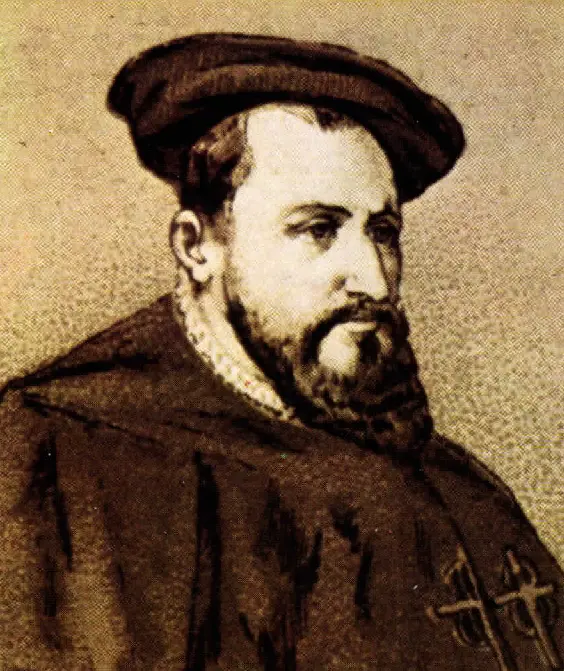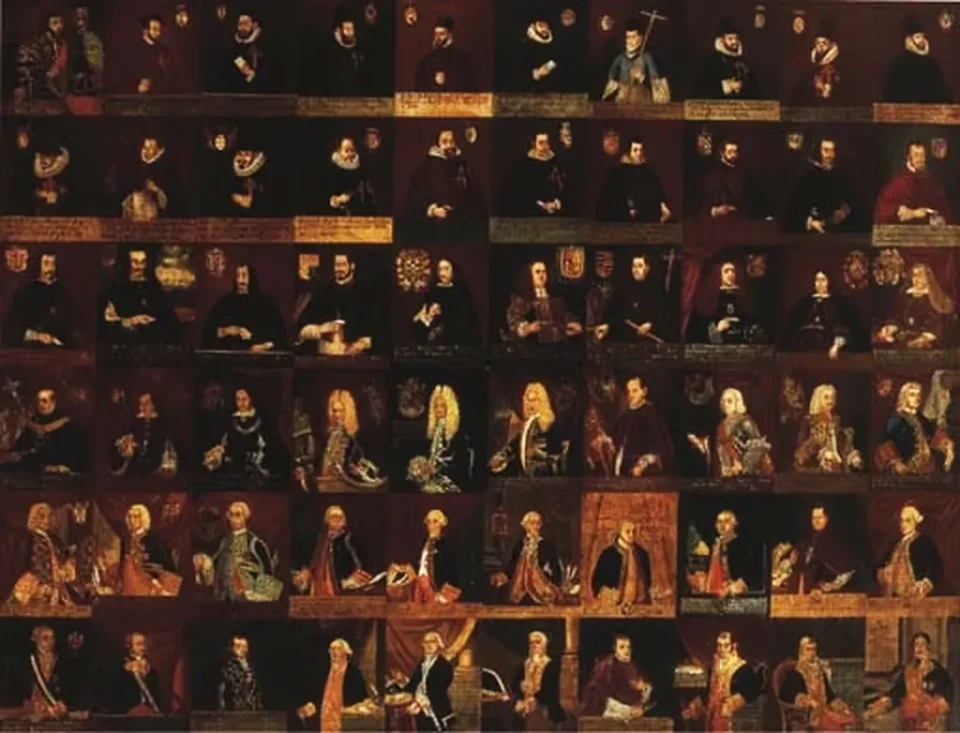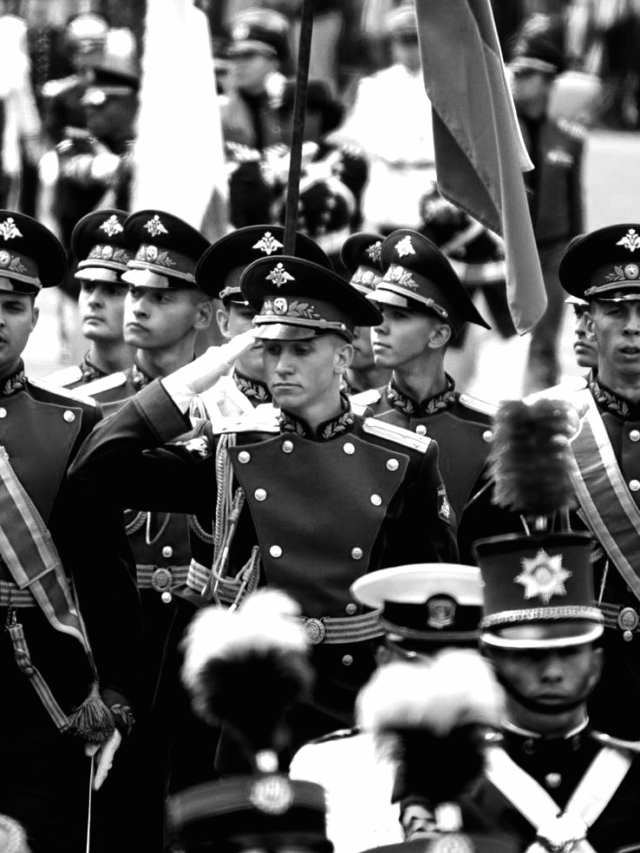You can also listen to this article in the following audio:
During the viceroyalty of New Spain, political and administrative power was headed by figures acting on behalf of the king of the Catholic monarchy, the viceroys of New Spain. Over the course of almost three centuries, more than 60 people – including viceroys, audiences and other transitory authorities – governed the territory on behalf of the Crown of Castile. This complete list makes it possible to know who these actors were and at what time they held office, making it easier to trace the key stages of the viceroyalty.
Complete List of Viceroys and Interim Governments of New Spain (1530-1821)
From the arrival of Antonio de Mendoza in 1535 to the brief mandate of Juan O’Donojú in 1821, more than 60 people – including formal viceroys, interim viceroys and governing audiences – occupied this position. Below is a table organized by reign, with the names and periods of each viceroy.
| King | Title | Name | Years |
|---|---|---|---|
| Carlos V | Audiencia Gobernadora | Sebastián Ramírez de Fuenleal y oidores | 1530–1535 |
| Carlos V | 1.º Virrey | Antonio de Mendoza | 1535–1550 |
| Carlos V | 2.º Virrey | Luis de Velasco I | 1550–1564 |
| Felipe II | Audiencia Gobernadora | Francisco Ceinos y oidores | 1564–1566 |
| Felipe II | 3.º Virrey | Gastón de Peralta | 1566–1567 |
| Felipe II | Audiencia Gobernadora | Luis Carrillo y Alonso de Muñoz | 1567–1568 |
| Felipe II | 4.º Virrey | Martín Enríquez de Almansa | 1568–1580 |
| Felipe II | 5.º Virrey | Lorenzo Suárez de Mendoza | 1580–1583 |
| Felipe II | Governor’s Hearing | Villanueva, Sánchez Paredes y otros | 1583–1584 |
| Felipe II | 6.º Virrey | Pedro Moya de Contreras | 1584–1585 |
| Felipe II | 7.º Virrey | Álvaro Manrique de Zúñiga | 1585–1590 |
| Felipe II | 8.º Virrey | Luis de Velasco II | 1590–1595 |
| Felipe II | 9.º Virrey | Gaspar de Zúñiga y Acevedo | 1595–1603 |
| Felipe III | 10.º Virrey | Juan de Mendoza y Luna | 1603–1607 |
| Felipe III | 11.º Virrey | Luis de Velasco II (2.ª vez) | 1607–1611 |
| Felipe III | 12.º Virrey | Fray García Guerra | 1611–1612 |
| Felipe III | Governor’s Hearing | Pedro Otalora | 1612 |
| Felipe III | 13.º Virrey | Diego Fernández de Córdoba | 1612–1621 |
| Felipe IV | 14.º Virrey | Diego Carrillo de Mendoza | 1621–1624 |
| Felipe IV | Governor’s Hearing | Paz de Vallecillo | 1624 |
| Felipe IV | 15.º Virrey | Rodrigo Pacheco y Osorio | 1624–1635 |
| Felipe IV | 16.º Virrey | Lope Díez de Aux de Armendáriz | 1635–1640 |
| Felipe IV | 17.º Virrey | Diego López Pacheco Cabrera y Bobadilla | 1640–1642 |
| Felipe IV | 18.º Virrey | Juan de Palafox y Mendoza | 1642 |
| Felipe IV | 19.º Virrey | García Sarmiento de Sotomayor | 1642–1648 |
| Felipe IV | 20.º Virrey | Marcos de Torres y Rueda | 1648–1649 |
| Felipe IV | Governor’s Hearing | Miembros de la Audiencia | 1649–1650 |
| Felipe IV | 21.º Virrey | Luis Enríquez de Guzmán | 1650–1653 |
| Carlos II | 22.º Virrey | Francisco Fernández de la Cueva | 1653–1660 |
| Carlos II | 23.º Virrey | Juan Francisco de Leyva de la Cerda | 1660–1664 |
| Carlos II | 24.º Virrey | Diego Osorio de Escobar y Llamas | 1664 |
| Carlos II | 25.º Virrey | Antonio Sebastián de Toledo | 1664–1673 |
| Carlos II | 26.º Virrey | Pedro Nuño Colón de Portugal | 1673 |
| Carlos II | 27.º Virrey | Fray Payo Enríquez de Rivera | 1673–1680 |
| Carlos II | 28.º Virrey | Tomás Antonio de la Cerda | 1680–1686 |
| Carlos II | 29.º Virrey | Melchor Portocarrero Lasso de la Vega | 1686–1688 |
| Carlos II | 30.º Virrey | Gaspar de la Cerda Sandoval | 1688–1696 |
| Carlos II | 31.º Virrey | Juan de Ortega y Montañés | 1696 |
| Carlos II | 32.º Virrey | José Sarmiento y Valladares | 1696–1701 |
| Fernando VII | Último Virrey | Juan O’Donojú | 1821 |
What were the governing hearings?
The governing audiencias were collegiate bodies that assumed the political and judicial control of New Spain on a provisional basis when there was no acting viceroy. These audiencias were formed by oidores and presided over by a prominent official, and their role was to guarantee the continuity of the government while a new viceroy was appointed or arrived. Although they did not have the same authority or symbolic presence as a viceroy, their role was crucial in several periods of transition.


Conclusion on the Viceroys of New Spain
The viceroys were key figures in the maintenance of political order, economic administration, and religious strategy in New Spain. This list allows you to quickly place each in context, and will be especially useful when you want to explore their actions, conflicts, or specific policies in broader articles. You can return to this entry when you need to recall who ruled in a given period or when mentioning a viceroy in other historical topics.
Explora nuestra colección de shorts








